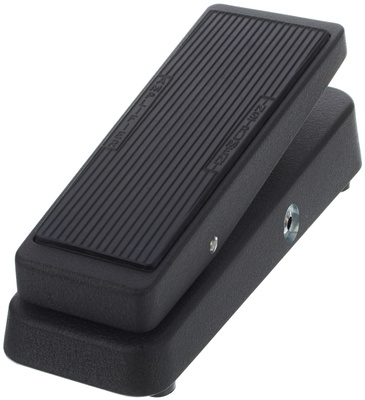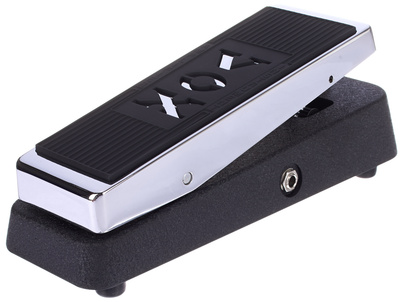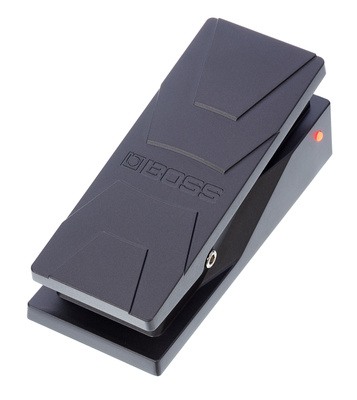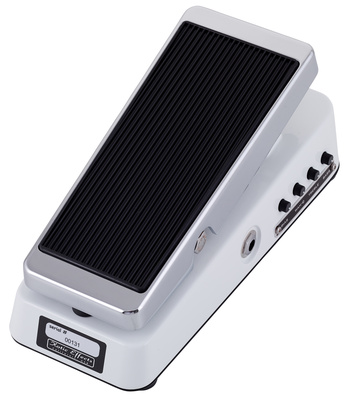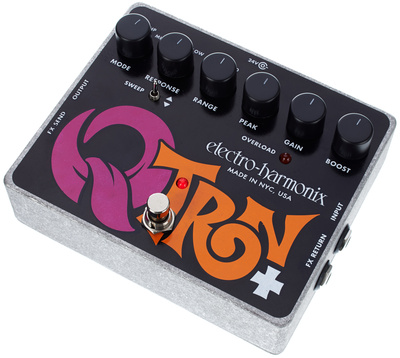The 5 Best Wah-Wah Pedals
Since the late 1960s, the wah-wah pedal has been an integral part of many guitarists' sounds, losing little of its popularity since then. Legendary guitarists who have used wah effects in their songs include Jimi Hendrix, Kirk Hammett, Michael Schenker, and Eric Clapton. In this article, we'll explain what makes the wah effect special and introduce our five current favorites.
What is a wah-wah effect?
Wah-wah pedals produce a sound that sometimes seems almost human. The term "wah-wah" is an onomatopoeia that describes the sound produced by this type of effects device. The wah effect is typically sold as a floor pedal with an expression pedal. This pedal changes the frequency of the input.
This effect is particularly popular in guitar solos because it allows guitarists to be more expressive. However, guitarists also often use wah effects for regular chords.
Striking examples of wah-wah use include "Voodoo Child" by Jimi Hendrix and "Bad Horsie" by Steve Vai. Vai's riff is probably familiar to some from the legendary guitar duel in the movie "Crossroads." You should also check out the crazy sounds of Rage Against the Machine guitarist Tom Morello.
You are free to choose where to place your wah-wah pedal in your effects chain. Depending on its location, the sound can change dramatically. However, most guitarists place their wah pedal at the beginning of the signal path.
The History of the Wah-Wah Pedal
Unlike other effects used throughout the music world, such as reverb, the wah effect was primarily developed for guitarists. However, the inspiration for the effect did not come from a guitarist but from trumpeter Clyde McCoy, who was known for producing human-like sounds with his instrument.
Bradley J. Plunkett developed the modern wah effect in 1966 while working for the American company Thomas Organ Company (a subsidiary of Warwick). Thomas was the US importer of Vox amplifiers and developed its own devices under the name.
Vox marketed the first wah pedal under the name Clyde McCoy. Later, however, the Thomas Organ Company decided to sell the devices in the US under the name "Cry Baby." Unfortunately, Vox failed to secure the trademark rights for the term. Dunlop is now known for pedals with this name.
Fun fact: Legendary jazz musician Miles Davis used wah-wah pedals with his trumpet in some of his songs.
How do wah effects work, and what types are there?
Technically, a wah effect is a sound filter that modifies the frequency of the resonance peak. In devices with an expression pedal, a low-pass filter is initially used. Pressing the pedal switches the device to a high-pass filter, and this switch from low to high—and vice versa—produces the characteristic "whining" sound.
Most wah effects are available as a classic pedal. Individual devices differ in terms of sound and the number of parameters of the wah effect that can be adjusted. Beginner devices often only have the pedal itself, with no additional buttons or controls.
Auto-wahs differ from manually controlled wah effects. Most of these devices do not have a pedal. Depending on the device, either the same wah sound is generated consistently, or the device reacts dynamically to how hard you strike your guitar's strings. The sound is therefore mostly rhythmic and predictable.
Wah pedals with adjustment options often allow you to change some of the following wah parameters:
Center frequency (Q): The frequency around which the sound "swirls," so to speak.
Range: The frequency spectrum covered between the pedal's starting position and its fully depressed position.
Boost: How much gain is used.
Bass/Treble/Mids: Knobs that determine the amount of treble, bass, or midrange used.
The 5 Best Wah-Wah Pedals
In this section, we present our current favorites. They are not necessarily the best-sounding effects in absolute terms. After all, we also want to recommend affordable options for the average person, not just those that cost several hundred euros.
Dunlop Cry Baby GCB95
The Cry Baby GCB95 is the modern version of Dunlop's legendary classic. It also ranks first on our list. The Cry Baby doesn't offer any adjustment options, but it produces a sound appreciated by many famous guitarists without requiring much experimentation.
It uses a red voice coil and a 100 kΩ hot pot potentiometer. It has a virtually indestructible metal housing and can be powered by a battery or an AC adapter.
Best of all, despite its status as the "original Cry Baby," the GCB95 is available for less than $100. This makes it one of the more affordable wah pedals.
Vox VX V847A
Second on our list of favorites is another modern take on a classic. The Vox VX V847A is the direct successor to the original Clyde McCoy Wah from the 1960s. Not only is the Vox device a wah pedal, but it also comes closest to the classic wah sound.
Like the Cry Baby, this device has no adjustment options. However, that doesn't mean you can't produce flexible sounds with the pedal.
With a reasonable price tag of around $80, the Vox VX V847A is a solid entry-level device.
Boss PW-3
The PW-3 from Boss is slightly more expensive and versatile than the other devices presented. It is also a pedal without any real adjustment options. However, it has two modes that can be switched using the switch on the front panel.
In vintage mode, the PW-3 produces a classic wah sound that rivals the original. In Rich mode, lower frequencies are preserved, making the overall sound richer than that of regular wah-wahs.
The PW-3 looks robust but is surprisingly light for a wah pedal thanks to its aluminum housing. With a price tag of around €140, it's not the obvious choice for beginners, but it's relatively affordable and more versatile than Vox and Dunlop devices.
Xotic XW-1
The Xotic XW-1 mimics the classic Clyde McCoy Wah circuitry but offers greater flexibility. Four small knobs on the left side control bias, Q, treble, and bass. This allows you to customize the XW-1 to your liking with virtually no limits.
The XW-1 can be powered by 9-volt batteries or a 9-volt power supply, which is sold separately. One particularly nice detail is that the Xotic pedal supports true bypass. This means that when you're not using it, it won't distort your sound.
With a price tag of around €300, the Xotic XW-1 is far from cheap for beginners. However, it offers an extremely flexible wah sound that is well worth the investment.
Electro Harmonix Q-Tron Plus
The Electro-Harmonix Q-Tron Plus is undoubtedly the most exotic device on this list. Visually, the device stands out: instead of an expression pedal, it has a colorful logo, a foot switch, and six large knobs.
It is therefore not a classic wah pedal, but rather an auto-wah. Wah effects in this category were particularly popular in the '70s. The Q-Tron Plus dynamically responds to the guitarist's playing style.
Its numerous setting options provide great flexibility in sound. In addition to the standard wah sound, it offers two distorted modes. If that still doesn't sound original enough, you can loop additional devices directly into the pedal via the FX loop with send and return.
Priced at around $150, the Q-Tron Plus from Electro-Harmonix is slightly cheaper than its array of features suggests.
Conclusion
While wah-wah pedals may not be the first effects device you should buy, they can add a whole new dimension to your sound. It's no wonder, then, that hardly any professional guitarist has some form of wah-wah on their pedalboard.
